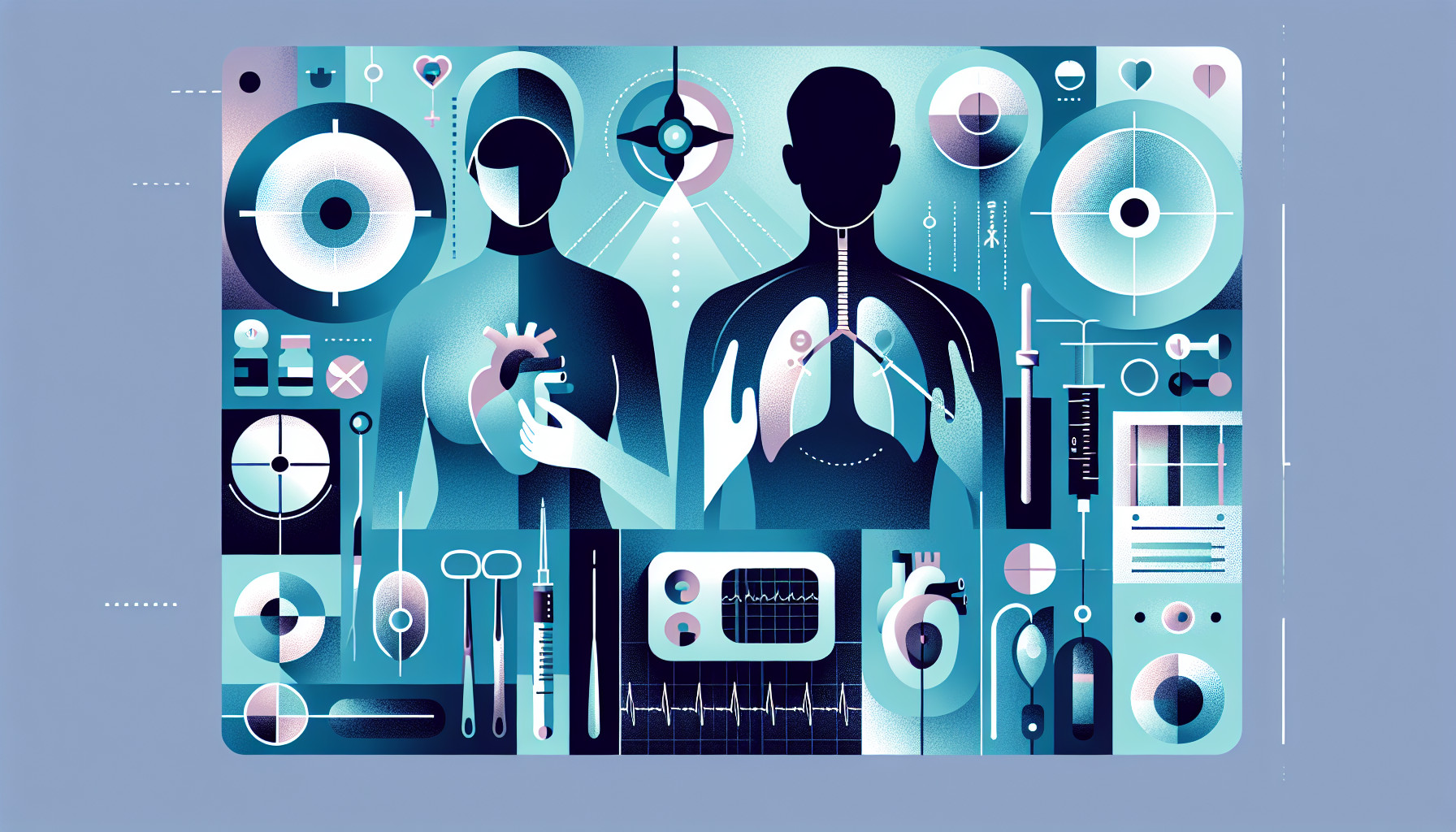Our Summary
This research paper talks about the use of energy devices in chest surgery. Over the past ten years, many such devices have become a normal part of surgical procedures. Some of these devices and their uses are well-established, while others are still being tested. The devices that are currently in use are continuously being upgraded, with new uses for these devices also under evaluation. The goal of these innovations is to make chest surgery safer and less invasive for patients. The paper reviews the current and potential future uses of energy devices in chest surgery.
FAQs
- What types of energy devices are currently being used in chest surgery?
- How have energy devices in chest surgery evolved over the past ten years?
- What is the primary goal of using energy devices in chest surgery?
Doctor’s Tip
One helpful tip a doctor might tell a patient about thoracic surgery is to follow all pre-operative instructions given by the medical team, such as fasting before surgery and avoiding certain medications. It is also important to communicate any allergies or medical conditions to the surgical team. After surgery, following post-operative care instructions, such as taking medications as prescribed, attending follow-up appointments, and avoiding strenuous activities, can help promote a smooth recovery. It is also important to communicate any concerns or changes in symptoms to the medical team promptly.
Suitable For
Patients who may be recommended for thoracic surgery include those with conditions such as lung cancer, esophageal cancer, mediastinal tumors, pleural diseases, chest wall deformities, and certain types of heart conditions. Thoracic surgery may also be recommended for patients who have suffered traumatic injuries to the chest or have certain congenital abnormalities. Additionally, patients with severe infections or other conditions affecting the chest cavity may also require thoracic surgery. Overall, thoracic surgery is typically recommended for patients who have conditions that cannot be effectively treated through other means, such as medication or less invasive procedures.
Timeline
Before thoracic surgery:
- Patient consultation and evaluation: The patient meets with the surgeon to discuss the need for surgery, potential risks and benefits, and to undergo various tests and evaluations to determine their suitability for surgery.
- Pre-operative preparation: The patient may undergo various pre-operative tests, such as blood tests, imaging scans, and electrocardiograms, to ensure they are in optimal health for surgery. They may also be advised on pre-operative instructions, such as fasting and medication management.
- Anesthesia consultation: The patient meets with an anesthesiologist to discuss anesthesia options and to ensure proper anesthesia management during surgery.
During thoracic surgery:
- Surgical procedure: The surgeon performs the thoracic surgery using energy devices, such as electrocautery, ultrasonic devices, or advanced energy sealing devices, to cut, coagulate, and seal tissues. These devices help to minimize bleeding, reduce tissue trauma, and improve surgical precision.
- Monitoring and anesthesia management: The anesthesiologist monitors the patient’s vital signs and administers anesthesia throughout the surgery to ensure the patient remains comfortable and stable.
After thoracic surgery:
- Post-operative recovery: The patient is closely monitored in the recovery room for any immediate post-operative complications, such as pain, bleeding, or breathing difficulties. Pain management and respiratory therapy may be provided as needed.
- Hospital stay: The patient may stay in the hospital for a few days to a week, depending on the type of surgery performed and their individual recovery progress. They will receive post-operative care, including wound care, physical therapy, and respiratory therapy.
- Follow-up appointments: The patient will have follow-up appointments with the surgeon to monitor their recovery, address any concerns or complications, and discuss long-term care and rehabilitation plans.
- Rehabilitation: Depending on the type of surgery and the patient’s overall health, they may undergo rehabilitation to improve their strength, mobility, and lung function after surgery. This may include physical therapy, breathing exercises, and lifestyle modifications.
What to Ask Your Doctor
- What type of thoracic surgery do you recommend for my condition?
- What are the potential risks and complications associated with this surgery?
- How long is the recovery process expected to be?
- Will I need any additional tests or evaluations before the surgery?
- What are the expected outcomes of the surgery?
- How experienced are you in performing this type of surgery?
- Will I need any post-operative care or follow-up appointments?
- What type of energy devices will be used during the surgery and how do they work?
- Are there any alternative treatment options to consider?
- What can I do to prepare for the surgery and optimize my recovery?
Reference
Authors: Goudie E, Tahiri M, Liberman M. Journal: Thorac Surg Clin. 2016 May;26(2):229-36. doi: 10.1016/j.thorsurg.2015.12.010. Epub 2016 Feb 10. PMID: 27112261
